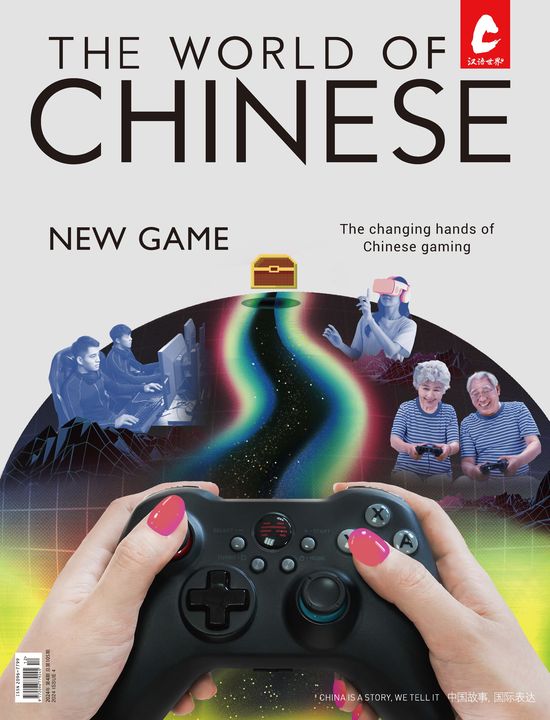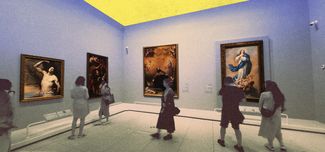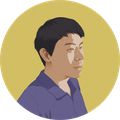Opposing characters in Chinese are not as contradictory as they appear
Chinese words work in mysterious ways—characters that have opposite meanings when used alone are sometimes placed together to form new words with their own meanings, often metaphorical. Here, we introduce six terms which combine opposite characters to create new meanings, proving that, when it comes Chinese characters at least, opposites do indeed attract:
东西 (dōngxī)/(dōngxi)
Used alone, 东 (dōng) means “east,” while 西 (xī) is “west,” and both can be used to denote direction: for example, in 东西南北 (dōngxī nánběi, literally, North, East, West, South, or everywhere) or 东西向的大街 (dōngxī xiàng de dàjiē, street spanning from east to west).
When used together with 西 (xi) pronounced with the neutral tone, though, 东西 (dōngxi) becomes a generic term for “things” or “stuff.” The word is vital to any Chinese learner as it can be used to denote any object that the speaker might not have a precise word for, or doesn’t want to describe. For example, 想不想吃点东西 (xiǎng bù xiǎng chī diǎn dōngxi, do you want to eat something)?
One origin story for the term states that after the fall of the Western Han dynasty, the new Eastern Han emperor moved the capital to Luoyang in the (you guessed it) east. The new capital became known as the 东京 (dōngjīng, Eastern Capital), while the old capital, Chang’an, was called 西京 (xījīng, Western Capital). Purchasing goods from these locations was referred to as 买东 (mǎi dōng, “buying east”) and 买西 (mǎi xī, “buying west”), respectively. Over time, the two directions together became synonymous with goods or stuff.
A person or animal can also be described as 东西 to express either affection or derision, as in 可爱的小东西 (kě’ài de xiǎo dōngxi, cute little thing) or 他真不是个东西 (tā zhēn bùshì gè dōngxi, he really is a horrible person).
教学 (jiāoxué)/(jiàoxué)
Similar to 东西, 教学 also has two definitions depending on the tones used when spoken. When the 教 (jiāo) is pronounced using the first tone, 教学 (jiāoxué) means “to teach.” When the 教 (jiào) is pronounced using the fourth tone, 教学 (jiàoxué) means “education.” The term is made from the characters 教 (teach) and 学 (learn). The term can be used as a verb, as in 他最近在农村教学 (tā zuìjìn zài nóngcūn jiāoxué, he recently taught in countryside), or adjective, as in 教学大纲 (jiàoxué dàgāng, educational syllabus) or 教学经验 (jiàoxué jīngyàn, teaching experience).
水火 (shuǐhuǒ)
Two of the Daoist 五行 (wǔxínɡ, five elements), 水 (shuǐ, water) and 火 (huǒ, fire) are exact opposites. The term is often used to describe two things that are opposed to each other, or incompatible. For example, 我们水火不容,无法相处。 (Wǒmen shuǐhuǒ bùróng, wúfǎ xiāngchǔ. Our natures are incompatible and we don’t get along.)
水火 can also relate to extreme misery, where 水 represents flooding while 火 represent a disastrous fire. The idiom 水火无情 (shuǐhuǒ wúqíng, fire and water have no mercy) is an example of this definition, as is the phrase 救万民于水火 (jiù wànmín yú shuǐhuǒ, to save people from hardship).
日月 (rìyuè)
The sun and the moon have always been complementary yet opposites. When 日(rì, sun/day) is paired together with 月 (yuè, moon/ month), they can refer to a period of time—several days or months—or, metaphorically, a lifetime. Examples include the idioms 日月如梭 (rìyuè rúsuō, the sun and moon shuttle back and forth), which can be translated as “time flies,” and 日月重光 (rìyuè chóngguāng, the sun and moon shine once more), which refers when things have returned to normal after an upheaval. There is also the proverb 各人过其日月 (gèrén guò qí rìyuè, everyone lives a different life). Adding a mountain radical, 阜 (fù), to the left these characters transforms them into 阴 (yīn) and 阳 (yáng).
矛盾 (máodùn)
This term consists of the characters 矛 (máo), for spear or lance, and 盾 (dùn), meaning “shield.” Together they refer to a contradiction. The story of how the word gained this definition comes from an extract of a paradoxical morality tale first told by the philosopher Han Feizi (韩非子) during the Warring States period (475 – 221 BCE). The term is found in phrases and idioms such as 解决矛盾 (jiějué máodùn, to solve a problem), 心情很矛盾 (xīnqíng hěn máodùn, feeling conflicted), and 矛盾百出 (máodùn bǎichū, full of contradictions).
手足 (shǒuzú)
Unlike the above, when 手 (shǒu, hand) and 足 (zú, foot) are paired together, the resulting term may have the literal meaning of referring to one’s appendages. However, it can also be used as a metaphor for brothers or people who are intimately connected, as in 亲如手足 (qīn rú shǒuzú, as close as hand and foot), which can be translated as “as close as brothers.” A more literal use of the term appears in 手足无措 (shǒuzú wúcuò, clumsy or helpless), literally “not knowing what to do with one’s hands and feet.”











